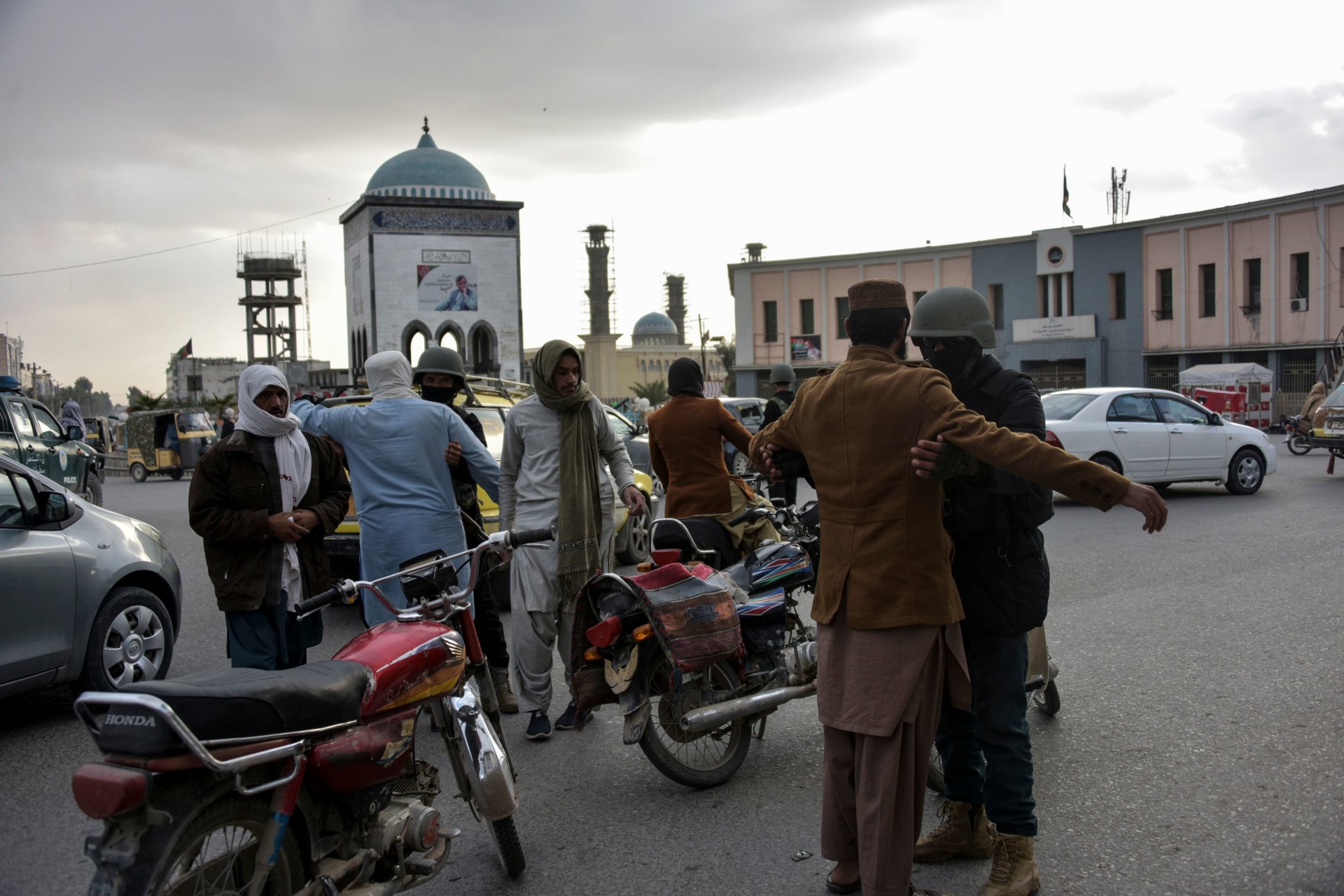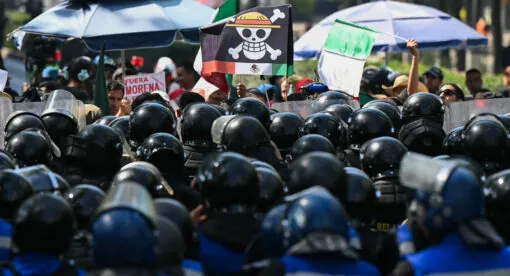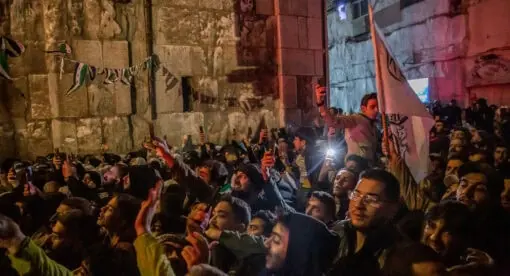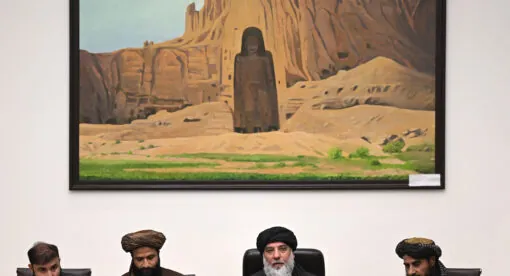The recent killing of the deputy chief of al Qaeda’s Pakistani cadre, Muhammad Hanif (aka Zarar), whom the Afghan Taliban had sheltered, shows that even within al Qaeda, Taliban-allied Pakistani jihadists have kept supporting the Taliban in Afghanistan. This assistance began before 9/11, but it now includes al Qaeda’s broader agenda.
Al Qaeda has helped to make the Afghan Taliban powerful enough to challenge the Western-backed Afghan government. The government in Kabul, the United States, and the international community have all recognized the Afghan Taliban’s strength in relation to Kabul, as is evident from the ongoing Doha peace process. Aiding the Taliban insurgency also helps al Qaeda reach its primary goal of defeating the greater enemy: the United States. Instead of transnational terrorism, these Pakistani al Qaeda groups are focused on preventing a U.S. military victory over the Taliban and their allies in Afghanistan. It was the reason al Qaeda in the Indian Subcontinent (AQIS) declared the news of the US withdrawal from Afghanistan as a magnificent victory.
Who Was Zarar?
On Nov. 10, Afghan security forces claimed the killing of the deputy head of AQIS in the Bakwa district of Afghanistan’s Farah province. Muhammad Hanif – also known as Zarar, Naseem, Abdullah, Ayub, and Hanifi – was an early post-9/11 member of al Qaeda in Pakistan who played significant roles at crucial stages of its survival.
Zarar was not an ordinary jihadist but a top bomb maker, trained in the 1990s in the militant camps of Harkatul Mujahideen (HuM), a Pakistani jihadist group loyal to Islamabad. HuM chief Fazlur Rehman Khalil recruited students from the religious seminaries of the Deobandi sect and established the group in the mid-1980s to help the Afghan Islamist insurgents fighting Soviet forces in Afghanistan. During the 1990s, the group extended its operations to Indian-administered Kashmir and remained active in Afghanistan, fighting against the Northern Alliance to defend the Taliban regime’s hold. It is worth mentioning that the Afghan Taliban are also followers of the Deobandi school of Islam; most of them studied in the Deobandi seminaries of Pakistan.
HuM established close links with al Qaeda in the 1990s, especially during the Taliban era. The group’s chief, Khalil, became a signatory of the Global Islamic Front for Jihad Against Jews and Crusaders, which al Qaeda formed in 1998 catalyzing the era of transnational jihadism. Pre-9/11, al Qaeda provided training and economic support to its allied Pakistani jihadist groups like HuM, which resulted in bringing their members under the direct influence of al Qaeda. These Pakistani jihadists helped the group survive after the destruction of their headquarters in Afghanistan after 9/11.
Zarar belonged to Karachi, the country’s metropolitan city and economic hub, which Pakistani jihadists used as a base to shelter key al Qaeda figures after the U.S. invasion of Afghanistan. Besides serving as a sheltering hub, Karachi also witnessed some of the earliest high-profile attacks perpetrated by al Qaeda’s local jihadist allies against the Pakistani army, U.S. officials, and Westerners. The Pakistani jihadists were furious about the sudden change in state policies: Pakistan’s joining the global war on terrorism, which resulted in the U.S. invasion of Afghanistan, which inflicted heavy losses on al Qaeda and its allies. The Pakistani jihadists and al Qaeda’s supporting broader Islamist community considered Gen. Pervez Musharraf – the country’s army chief and chief executive – solely responsible for this abrupt change.
Founding HuMA for the Post-9/11 Jihadist War in Pakistan
Zarar, with few other jihadist comrades, split off from HuM, protesting its leadership’s silence over Pakistan’s post-9/11 policies. They became adherents of al Qaeda’s anti-state narrative. Zarar, along with his jihadist mentor and recruiter, Imran Ali Siddiqi (aka Shaikh Wali Ullah), established a covert splinter group of HuM: Harkatul Mujahideen Al-Alami (HuMA). Siddiqi became the group emir, and Zarar his deputy and the operational head of HuMA.
Thus, Zarar became the master planner of the early high-profile Islamist terrorist attacks in Pakistan, including a multiple-VBIED (vehicle-borne improvised explosive device) attack on Musharraf’s motorcade in Karachi in April 2002. Within a few weeks, they also attacked the U.S. consulate general in Karachi and a bus of French naval engineers with suicide VBIEDs. Eleven French engineers on an official visit to Pakistan, providing technical support to the Pakistani navy, lost their lives in the bus attack. It was a severe blow to Pakistan’s security, spreading a massive fear of terrorism in the country and raising international concerns over its security situation.
The Pakistani security agencies unearthed HuMA’s underground network in a few months, arresting Zarar and Siddiqi with several subordinates. A Karachi-based senior Pakistani journalist, monitoring Pakistani al Qaeda since 9/11, told the author that for years the security forces failed to dismantle the HuMA network, which shifted to al Qaeda’s safe havens in the northwestern tribal region of Waziristan.
Zarar’s Trajectory in al Qaeda
Zarar remained in prison with Siddiqi for eight years. The provincial high court of Sindh province released them in 2010. They quickly went to Waziristan and joined al Qaeda’s setup there.
Al Qaeda’s Pakistani network, of which they were founding partners before their arrest, had emerged into a powerful force in the Afghanistan-Pakistan region. The al Qaeda leadership warmly welcomed both and trusted them with significant responsibilities per their expertise. Siddiqi joined the administrative leadership wing of al Qaeda and took charge of its training camps in Waziristan. According to another senior journalist source from Karachi, Zarar became a master terrorist trainer and planner, imparting terrorism expertise to al Qaeda’s recruits and planning attacks in Pakistan and Afghanistan.
According to al Qaeda’s statements they were in prison, Siddiqi and Zarar remained in contact with the al Qaeda central leadership based in Waziristan and with their group, which was now part of a Waziristan-based al Qaeda brigade for Pakistan. Both men were well aware of the manpower needed for al Qaeda’s expanding fronts in Pakistan and Afghanistan. Thus, they recruited new members from prison. One such recruit was Mufti Ishtiaq Azmi (aka Mufti Khubaib) who, after his release in 2013, joined Zarar and Siddiqi in Waziristan with his small group from Karachi. Mufti Azmi later rose to a senior leadership position in AQIS.
Al Qaeda’s strength is keeping its members, groups, and leadership secret from the external world except for a few, such as those who appear in its media or those whose eulogies are used for recruitment and propaganda purposes. For example, there was no official information from al Qaeda sources on Siddiqi’s post-2010 activities until his killing, when the AQIS central leadership released detailed eulogies for him, disclosing his significant roles in al Qaeda. Zarar likely will not receive such eulogies; AQIS is trying its best to conceal its presence in Afghanistan to facilitate the U.S.-Taliban peace deal and ensure U.S. troops’ withdrawal from Afghanistan. They have not yet confirmed the killing of its chief, Asim Umar, who was targeted in Helmand’s Musa Qila district in September 2018.
The so far limited information about Zarar’s roles in al Qaeda after 2010 comes through the claims of counterterrorism Pakistani officials and senior Afghan and Pakistani journalists the author contacted for this piece. This information shows that Zarar became head of the Siddiqi group in al Qaeda after the latter’s killing in a U.S. drone strike on Sept. 10, 2014, in the Gayan district of Afghanistan’s Paktika province. Zarar then briefly became the deputy head of AQIS somewhere between 2015-2018 but then shifted to the military operations wing of AQIS. He helped the Afghan Taliban in planning a sophisticated terrorist attack against the Afghan and U.S.-allied security forces in Afghanistan. He also supervised AQIS military operations in Pakistan, particularly in Karachi.
The claims about Zarar becoming the AQIS deputy head and then shifting to its operational wing are plausible. AQIS faced a leadership crisis after losing many senior leaders in Afghanistan in U.S. and Afghan forces’ counterterrorism operations in 2015. Being a senior-most Pakistani leader of al Qaeda and becoming emir of its earliest brigade in Pakistan in late 2014 primed him for the role. On the other hand, Zarar was a master terrorist planner from the beginning and would have thrived more and performed best in the military wing of AQIS, rather than having administrative responsibilities as deputy chief.
The Significance of Zarar’s Death
After 9/11, the pro-state indigenous Pakistani jihadists turned their guns against the state in response to the government policies that severely affected their jihadist idols, the Afghan Taliban. The Pakistani government not only helped the United States remove the jihadists’ Taliban hosts from power in Afghanistan but also gave support to the global counterterrorism campaign that resulted in the deaths and arrests of Pakistani jihadists. This brought them under the influence of al Qaeda, who shared their desire for revenge on the Pakistani state. Al Qaeda welcomed the post-9/11 anti-state Pakistani jihadists into its ideology, thereby establishing a strong franchise in the Afghanistan/Pakistan area: AQIS.
Zarar’s death while under the Afghan Taliban’s protection at a crucial time in the Taliban’s peace talks with the United States – which remains al Qaeda’s prime enemy – shows the Taliban’s loyalty to their Pakistani al Qaeda brethren, who aided in the Taliban’s post-9/11 resurgence. Zarar is not the only case. Senior al Qaeda Central leader Hussam Abdul Rauf, AQIS chief Asim Umar, AQIS media chief Engr Osama Ibrahim Ghouri and his deputy Engr Hashaam, and AQIS external affairs head Rana Umair Afzal are other senior al Qaeda leaders killed in the Taliban strongholds in Afghanistan recently.
The Taliban’s covert hosting of these al Qaeda veterans shows that the groups have full cooperation in Afghanistan. It also implies that al Qaeda’s silence in Afghanistan does not mean the end of the group; it could be serving their strategic goals.
On the other hand, these assassinations show that U.S. forces seem determined to eliminate the al Qaeda elements before their withdrawal from Afghanistan. Therefore, to maintain the peace process with the Afghan Taliban, which demands that U.S. troops refrain from directly attacking the Taliban, Washington is using the Afghan security forces to neutralize the senior al Qaeda commanders hiding behind the Taliban. There are questions about what counterterrorism operations might look like after the U.S. withdrawal from Afghanistan. After all, the pullout will result in the Taliban’s full control in the country, where they remain committed to hosting their foreign jihadist brethren, including al Qaeda.
The most critical question is what the future will be for al Qaeda cadres in Afghanistan after the U.S. withdrawal. Will they only fight the Taliban rivals in the country, as they did pre-9/11, by providing frontline defense to Kabul’s Taliban regime against the Northern Alliance led by Ahmad Shah Masoud? Masoud’s son’s recent speeches to large secret gatherings of influential commanders in northern Kabul signal that the alliance might fight any Taliban government in Afghanistan, just as the alliance did before 9/11. Besides any opposition like the Northern Alliance, the major challenge for Taliban in Afghanistan remains Islamic State Khorasan, which is a more vicious enemy of the Taliban than the Northern Alliance.
Moving forward, al Qaeda’s global legacy will to a great degree depend on how the remaining Pakistani veterans of al Qaeda in Afghanistan and the region will keep their commitment to the group and the legacy of the US-Jihadist war. Washington’s withdrawal from Afghanistan is forcing the group to adjust to an era in which it cannot leverage the presence of U.S. forces to its advantage.
Abdul Sayed is an independent researcher on jihadism and the politics and security of the Afghanistan-Pakistan region. Sayed has a master’s degree in political science from Lund University, Sweden. He Tweets at @abdsayedd.
The views expressed in this article are those of the author and not an official policy or position of the Newlines Institute.






